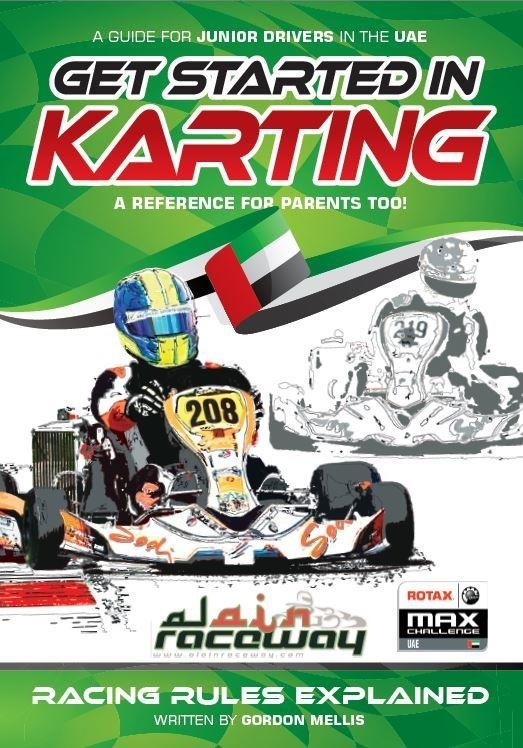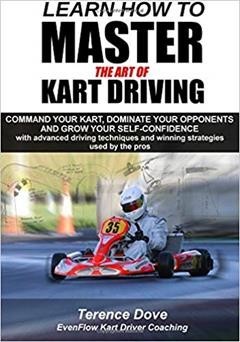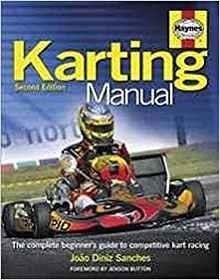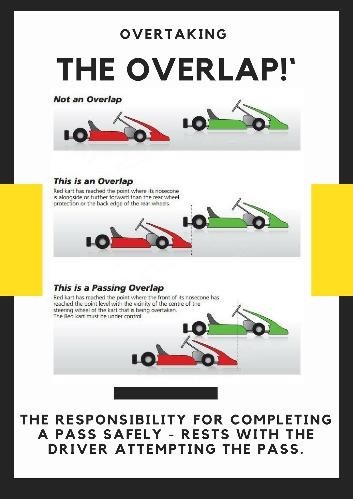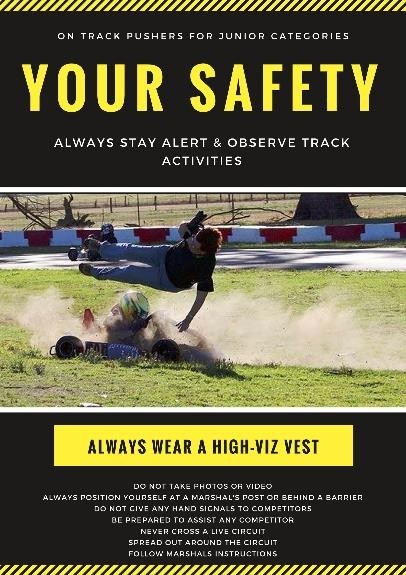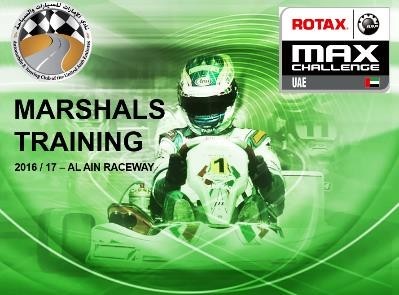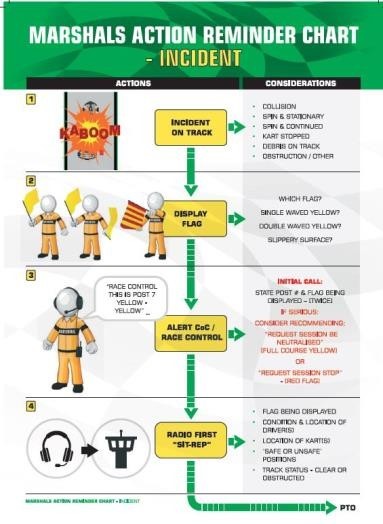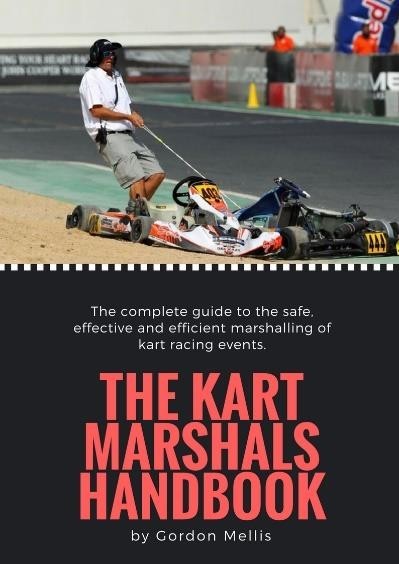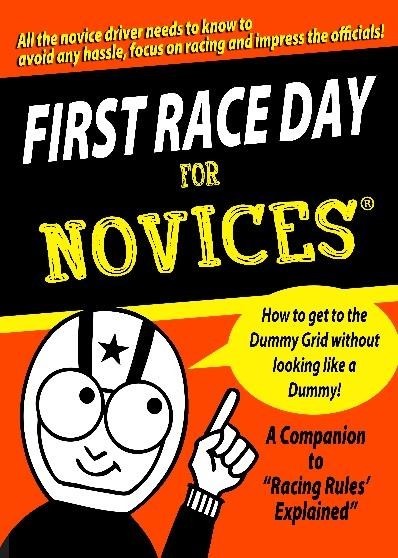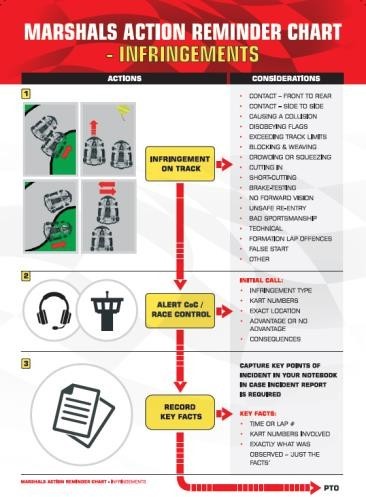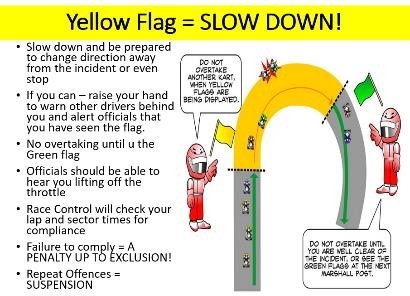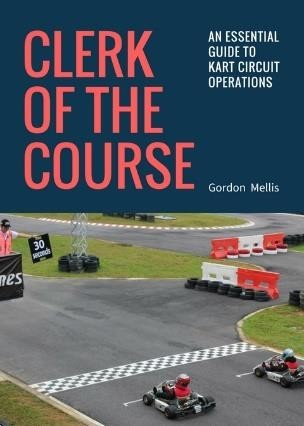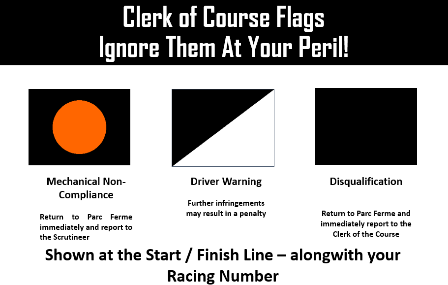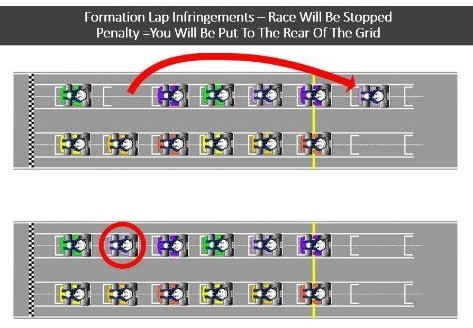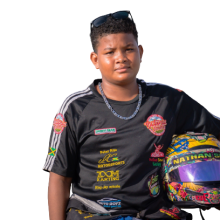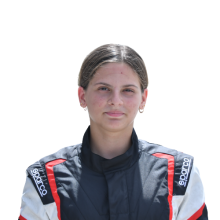Outline Curriculum
Competitors – Basic Rules & Procedures
- Officials – introductions, roles and responsibilities, basic flag signals - introduction
- Pre-event planning and preparation – administrative, use of checklists - mental and physical preparation - nutrition
- Race day procedures – signing on, administrative, scrutineering, track walk, drivers briefing etc.
- Race start procedures
- Driving standards – do’s and don’ts – what race officials look for
- Incident management - do’s and don’ts
- Race Finish to Parc Ferme - do’s and don’ts
- The judicial procedure – stewards hearings, penalties, consequences Race + Respect
Reinforcing the need for respect of officials and fellow competitors on and off the track. Outline appropriate use of social media.
Written / Oral Test
At the end of the formal instruction sessions, conduct a combined oral /written test. This is a series of twenty multiple choice questions which test the driver's knowledge of the primary safety rules and race procedures. To pass the test it is expected that the driver would achieve an 80% score.
(Note; This test is designed and conducted as a ‘fun’ and enjoyable exercise using realistic ‘what-if’ scenarios while still assessing the competitors knowledge acquisition).
Competitors - Driving
Fitness
Overview of fitness and nutrition recommendations, both between events and on race-day. Cover physical warm up exercises and mental agility / reaction type exercises on race day.
Mental Approach
Pre-Event
- Building confidence
- Developing self esteem.
- What are driving skills?
- Understanding the components of speed
- Focussing on the things that matter At the Circuit
- Concentrate – on what?
- Visualisation – mental rehearsal
- Know your opponent(s)
The single most important part of a driver's preparation to drive competitively is assuming the correct mental attitude. The driver must perfect the art of focusing his or her concentration before undertaking track driving. Due to the continuous high speeds involved the driver must learn to maintain this intense level of concentration throughout the time on the circuit. In order to focus 100% on the race track, a driver must clear his or her mind of outside thoughts prior to starting.
Personal Driving Discipline
Drivers must act, at all times on the track, in the pits and paddock drive with responsibility and consideration. Driving by `instinct' alone is not acceptable, drivers must also drive with intellect.
The limits of both kart and track must be approached gradually, the limits of the driver will increase with accumulated experience. When on the track drivers must resist the temptation to drive out of their ‘depth'. Driving beyond personal limits is the raw material of an accident and will at the very least incur the wrath of the motor sport officials and authorities.
Underline that rules and officials of the circuit are there for driver safety and enjoyment and not as some would believe, to spoil the competitors day.
Racewear
In order to compete in karting, a kart driver must be equipped with the correct safety wear. This comprises, as a minimum, the following: Crash Helmet, Racing Suit, Boots and Gloves. Helmets must meet certain safety standards and carry an appropriate sticker. Suits must be CIK homologated, (typically indicated by an embroidered approval number and year code under the collar).
Racewear should be presented for inspection at scrutineering in a clean and tidy condition and must be a secure fit.
Scrutineering
- Kart presentation
- Safety checks versus eligibility
- Consequences of a technical non-compliance
- Administration – log books, scrutineering cards etc.
Driving Position
Before driving onto the circuit, drivers must concentrate on familiarising themselves with the controls of the kart. The correct seating position is vital if maximum control is to be achieved. The driver must sit in a relatively upright position with hands held on the steering wheel at a quarter to three or ten to two grip. Arms and legs should have a degree of bend and grip on the steering wheel should be relaxed but firm. This `one grip' technique will be maintained throughout, in preference to the `feeding the wheel' as favoured for use on the roads. This preferred method allows for a positive but smooth control of the kart.
On Circuit
Driving Analysis
The Driving Analysis is a driving test session which will examine the driver's capabilities to ensure that they are ready to start racing. It is expected that the driver must have had practice and/or tuition in racing karts (not solely four-stroke indoor karts). The driver will be tested on racing lines, braking, throttle control, steering, general co-ordination and confidence in a racing kart to produce lap times appropriate for a novice driver.
Entering the Race Track
Only enter a race track when it is safe to do so. If joining the race track during practice or a race, drivers should look to make sure the circuit is clear, to ensure that they are not driving into the path of a kart already on the track. A kart travelling at slow speed whilst leaving the dummy grid is easier controlled than a kart already on the track traveling at racing speeds. If this kart is forced to take avoiding action, it may result in loss of control. It is normal to raise an arm when joining or leaving the circuit, or when traveling at reduced speed.
Race Starts
- Formation lap
- Looking for opportunities or trying to avoid problems
- Planning your start strategy
- First corner
Vision & Situational Awareness
The kart driver needs to develop a good situational awareness – what is happening around them on track, almost a sixth sense to determine where karts are around them, constantly evaluating track conditions, using peripheral vision to watch for flag and light signals, while not being tempted to keep looking behind, which takes the drivers focus from what is happening ahead.
A driver cannot control what is happening behind them, only what’s about to happen ahead. Forward vision is what’s required, but the drivers vision needs to be on ‘main-beam’ and not on ‘dip’ – looking far enough ahead to give the brain time to process what is being seen.
The Racing Line
The racing line starts with the approach to a corner and establishing the correct kart positioning. The driver should position the kart on the extreme outside of the circuit on the approach to a corner, running the outside wheels parallel to the white line or grass border as appropriate.
At the braking point for the corner, the driver should smoothly release the accelerator pedal, and apply gentle but increasing pressure onto the brake pedal.
The accelerator and brake pedals must not be used as on-off switches, smooth acceleration and braking will enhance performance. Braking should take place in a straight line, continuing up to the turning-in point.
The driver must arrive at the turn-in point at the optimum corner entry speed. At or just before the turn-in point the driver will look into the bend to find the natural apex or clipping point. At and not before the turn-in point the driver will release the brake, steering lock will be smoothly applied using the `one grip' method and the kart will coast to this clipping point. The driver will again aim for a high degree of accuracy at the apex, seeking to run their inside wheels brushing against the kerb at this point. Once the apex is reached (and providing the apex is reached) the driver can start to feed the power back on, simultaneously winding off the steering lock. The objective is to make a fast, wide exit from the corner.
The driver should aim to traverse the entire width of the track and full throttle should be re-applied by the exit kerb, together with returning the steering wheel to the straight-ahead position. This technique provides the fastest possible corner exit and therefore the highest speed on to the following straight.
In order to pick up the racing line through a given corner, it is essential for a driver to develop the art of looking through that turn, not as most novices practice, looking at it. As speed increases so point of focus should lengthen accordingly.
Novice Mistakes on Racing Lines
The driver must resist the natural temptation to turn into a corner too early. The racing line features a late, committed turn-in point. A premature turn-in will inevitably lead to an early apex point and therefore a tendency to run out of road on the exit corner.
Another novice driver error involves entering corners some way above the optimum entry speed. Apart from being potentially hazardous, this leads to a driver having to continue their braking into the corner and thus, by consequence, compromising the driver's exit speed onto the following straight.
Driving Off the Racing Line
Occasionally it will be necessary (or unavoidable) for the driver to run off the regular racing line, for example when overtaking, avoiding a spun/damaged kart or running wide through over-exuberance. The driver must be aware of the physical limitations associated with driving `off line'. Grip is reduced by the presence of "marbles" (small balls of rubber thrown of racing tyres, that are normally swept off the correct line). Speeds must be reduced accordingly. The kart will not accept high cornering or braking loadings. This must be considered when setting braking distances and corner entry speeds.
The Overtaking Manoeuvre
The driver must respect one main rule in connection with overtaking, namely: "it is the responsibility of the driver making the overtaking manoeuvre to complete it safely, not the responsibility of the kart being overtaken". A driver who is about to be passed should maintain the racing line, the faster driver will move off line to complete the pass.
Race Strategy & Tactics
- Qualifying
- First corner does not win the race
- Defending – when to defend and when not to!
- Coping with Leading
Running Out of Track
In the unfortunate event of a driver and kart leaving the circuit (usually caused by excessive corner entry speed and/or harsh mid corner throttle application), certain recovery techniques need to be employed. As the kart slides outwards, onto the kerb or grass, the driver must resist the natural temptation to `wrench' the wheel and pull the kart back on line, usually accompanied by snapping off the throttle. Due to the much-reduced grip on the outer wheels, either of these over- corrections will very likely lead to the kart spinning out of control.
The correct solution is to minimal control corrections and to gently ease the kart back on to the circuit.
Establishing a Driving Rhythm
Before the driver leaves the pits, he or she should have established an objective for that session of driving. The objective in the introductory stages, should not be to set fast lap times. The opening laps of the training exercise should be used to warm up and be dedicated to reconfirming the understanding of the racing line. Learning the basics correctly at this stage will pay dividends throughout your racing career.
Braking
- Braking points
- Locking up
- Stable braking
- Trail braking
- Power braking
Steering
- Minimum steering inputs
- Feeling for oversteer and understeer
- Where to hold the steering wheel
- Using the body to aid steering
The Components of Speed
The driver must focus on improving three principal areas of his or her driving, smoothness, accuracy, and consistency. These are the component elements of speed. Concentrating on these areas will enable the driver to drive quickly and smoothly throughout. Consciously `trying' to drive fast will only lead to
`overdriving' and basic errors of technique brought on by the limitations of experience.
Understeer and Oversteer / Cornering Slides
Every driver will, at some stage, experience both understeer and oversteer slides. How swiftly that driver is able to recognise the condition and take the appropriate corrective action determines how quickly that driver will ultimately be able to lap the race track.
If the kart understeers - that is a front wheel skid.
This handling state is generally induced by entering a corner too quickly, with the kart unbalanced with too much steering lock or an excess of power, or indeed a combination of these factors. The characteristic as experienced by the driver is for the front of the kart to try and go straight on. The correction is to reduce the control(s) causing the skid, i.e. take off the power, lock, brakes, etc.
Oversteer - that is a rear wheel skid.
The characteristic here is loss of grip of the rear, and a tendency for the back of the kart to "overtake" the front. Oversteer should be corrected by the application of corrective opposite lock in the direction of the skid. The throttle should be eased back. If the kart is constantly over or under steering it may be necessary to adjust the settings of the kart.
Spinning — A Damage Limitation Exercise
If the driver has exceeded the limits of the kart (and/or their personal competence), to the point where corrective action is unable to bring oversteer back under control, then a spin becomes inevitable. This is a disorientating experience, but it is essential that the driver works to minimise the consequences. As soon as control is fully lost, the brake should be depressed. Steering should be held lightly, with thumbs positioned outside the wheel. The instant the kart comes to a halt, the driver should raise his arm and cautiously step out of his kart being aware of where the other traffic is and either re-start if possible or move the kart and him or herself to a safe place away from the track, out of the way of potential danger.
Basic Track Discipline - Personal and Practical
Flag Signals
The driver must be aware that whilst these notes cover the basics of `physical' track driving techniques, awareness of flag signals is a vital aspect of safe performance driving. Flags are the only means of communication with a driver on the circuit. Failure to notice (and comply with) flag instruction can result in penalties being applied or an accident and potential injury.
Drivers must have studied, revised, and know the meaning of the various flags, before competing. On the track it is important to know where the flag positions are situated. It is sensible to walk the track in advance of practice and racing to establish the positions of the flag posts.
Safety
A re-emphasis of all safety related elements from other sections towards the end of the day.
Session Stoppage
If a session has to be stopped due to accident and/or track blockage, red flags will be displayed at all marshals posts. Drivers should immediately stop fast lapping, reduce to a slow speed (within a safe distance) and return to the start line without overtaking. Drivers should be prepared (and able) to stop if required, on the track.
Mechanical Failure
A driver suffering a kart mechanical failure on the track must immediately alert the other drivers of their situation. This can be most effectively done by raising an arm high. If the kart is undriveable or dropping fluids the driver must pull the kart as far off the track as possible. If driveable, the kart can be taken slowly back to the pits, whilst keeping out of the way of other traffic.
Practice Days
- Using doubts and questions to improve lap times
- Separate serious practice time from just driving for fun but make time for having fun and just driving
- Experimenting
- Using data and lap times for comparisons
- Using driving games at home
- One handed driving
OPTION - The Wet Weather Experience
Wet conditions present a driver with a considerably increased work load. To exploit a wet track the driver must be capable of driving with a high degree of finesse. Control applications must be smooth, gentle and progressive.
Sudden or sharp control actions should be avoided. Visibility will be much reduced by spray. The use of a clear or lightly tinted yellow visor is recommended for wet conditions. There are also a variety of spray applications to help water run off the helmet visor and/or to prevent fogging. A wet track can show a slightly different racing line, dictated by that individual track's idiosyncrasies of drainage. If a layer of rubber has been laid on the circuit, it may create a slippery surface. Therefore, it may be necessary to drive off the normal racing line to find grip. As a rule, braking distances must be increased substantially to compensate for the increased possibility of brake lock-up. Cornering speeds will be reduced, and the kart's power will have to be applied later and more progressively through the corner.
Other traffic should be treated with caution, either when passing or running in close proximity. A track can often be at it's slippiest just minutes after rain starts to fall, the first shower lifting any recently deposited rubber and possibly oil to the surface creating a sensation not dissimilar to driving over diesel oil on the highway or driving on ice.
Great care should also be taken when a driver is confronted with a wet, but drying track. This can be especially demanding because the dry line offers a relatively high level of grip, however the slightest driver error will result in one or more wheels running onto wet track, thus creating all manner of handling problems. A kart braking too heavily in these conditions will have a tendency to want to continue in a straight line and trying to turn into the corner will usually result in a spin. Working at and around (but not over) the limit of traction is the key to mastering a wet race track.
Resource Materials Available
Publications;
- Racing Rules Explained Booklet – for issue to competitors / parents
- Drivers Briefing / Driver education PowerPoint Slide Pack (78 slides that can be mixed and matched between uses as may be required.)
- Learn How to Master the Art of Kart Driving
- The Kart Manual
- Novice Reminder Cards
- Flash Cards
- Officials Forms
- Laminated Marshals Reminder Cards
- Circuit Posters
|
|
|
|
|
|
|
|
|
|
|
|
|
|
|
|
|
|
|
|
|
|
|
|
|
|
||
Coaching Young Kart Drivers Points to Consider
- The age group has a short attention span for formal instruction - coaching
needs to be in forms of ‘sound bites’, extensive use of illustrations, drawings and demonstrations etc.
- Simple terminology – explain any terms or phrases used
- Occasional use of the junior drivers favourite / role model drivers (e.g. F1) in explanations can be beneficial
- Work on one technique at a time
- Break the technique, issue or problem into sequential elements or components
- What if scenarios - use open questions
- Coaching out on track in small groups is best
- Periodic repetition and validation of learning is required.
- What is explained to the driver should also be explained to the parent / guardian / entrant – for novices it’s as much as about coaching the parent / guardian as it is the driver.
- Where possible- have an experienced (senior) show the junior driver the technique on track
- Child safeguarding protocols

.png)
